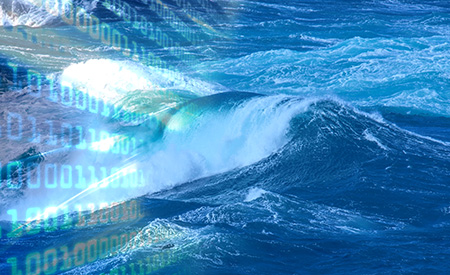/H2020/DTOCEANPLUS
Type of resources
Available actions
Topics
Keywords
Contact for the resource
Provided by
Formats
status
-

This document collects the main guidelines, standards and procedures applicable to the implementation of the tools and modules in the DTOcean+ suite.
-

This report collates the materials used throughout the DTOceanPlus project on knowledge exchange and training.
-

This document is the first annual report on dissemination and communication activities regarding DTOceanPlus project.
-

The present document refines the previous version submitted in October 2019, updates the initial assumptions, and depicts more clearly the exploitation routes and actions to reduce risks.
-

This report is the outcome of a feasibility and cost-benefit analysis. The aim of this task was to conduct an economic feasibility and cost-benefit analysis, to assess the technologies and funding frameworks to support attractive business cases for both public and private funders.
-

This document is the second annual report on dissemination and communication activities regarding DTOceanPlus project.
-

The objective of the DTOceanPlus project was to develop a software suite of open source advanced tools for the selection, development and deployment of ocean energy systems. DTOceanPlus project made it to develop and demonstrate an open source sotftware suite of second generation design tools for ocean energy technologies including sub-systems, energy capture devices and arrays. These tools support the entire technology innovation process, from concept, through development, to deployment. More broadly, the project also provided an industry standard for communicating technology descriptions throughout the sector. To complement the numerical work, an extensive market analysis of the ocean energy sector is publicly available.
-

A coherent set of requirements have been developed for the DTOceanPlus suite of design tools based on analysis of gaps between tools in mature industries and those in the ocean energy industry, learning from the original DTOcean project, and the stakeholder expectations identified in the user consultation exercise. The technical requirements in this document are translated from the general requirements for the overall suite of tools, and specific requirements (functional, operational, user, interfacing, and data) for the Stage Gate design tool that will be developed as part of this project.
-

This report collects the outcome of the work carried out to fully describing the data used for a generic ocean energy system design in a structured manner. This has been done by means of the definition of a digital representation for the elements of the whole system at different levels of aggregation (array, devices, sub-systems, and components) and accounting for different levels of complexity of the project. The ambition of the present framework is to standardise the data formats describing an ocean energy design so that it can be used as a common interchange language among different sector actors
-

The objective of Task 4.3 was to carry out the testing of the Stage Gate design tool in order to verify that it meets all the previously defined requirements (in WP2 and T4.1). This report documents the outcome of T4.3 “Verification of the Stage Gate design tool.”
 Catalogue PIGMA
Catalogue PIGMA